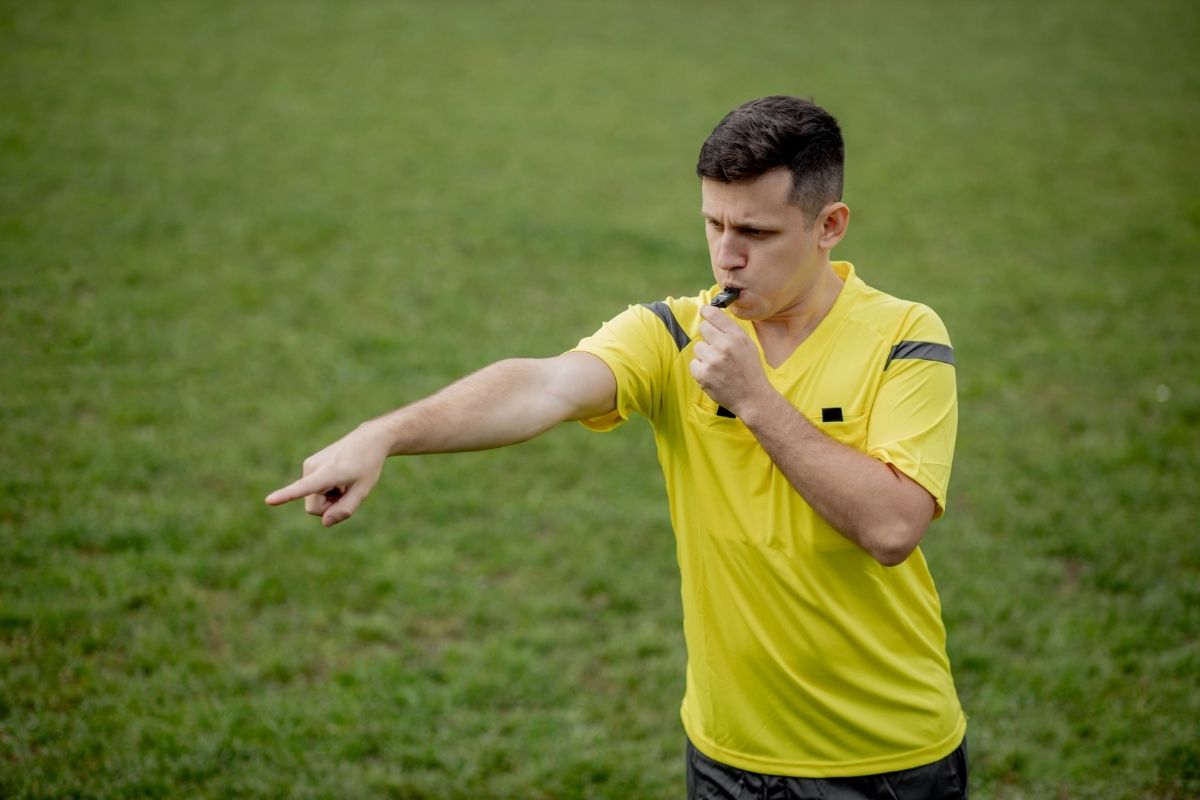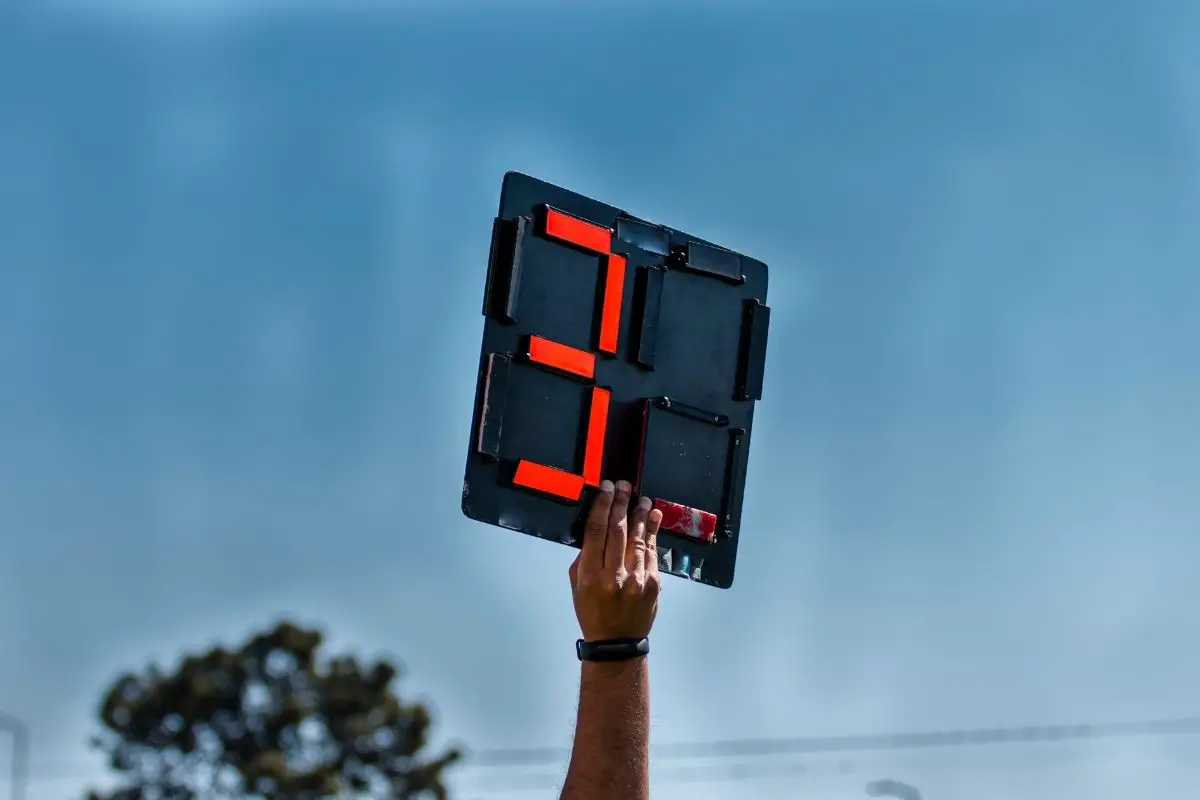Soccer is a very popular sport that is played all over the world. Soccer is also one of the most complicated sports.
It might not seem as though soccer is complicated, especially when the aim is to score goals. However, the game has many different rules.


In fact, different elements of soccer have different rules. Throw-ins are an example of this. Throw-ins might seem like a simple part of the game, but there are eleven throw-in rules that need to be followed.
In this guide, we are going to walk you through each of the eleven soccer throw-in rules. We are going to assess each rule in detail so you know all you need to know about what each rule means.
Eleven Rules Of Soccer Throw-Ins
Law 15 looks at all of the rules of throw-ins. Here are the rules of throw-ins summarized:
Throw-Ins Are Granted When The Entire Ball Goes Over The Touchline
Touchlines are the white lines that are marked on the long sides of the soccer field. When a ball passes over these lines and is outside of the marked soccer pitch, then a throw-in is granted by the referee.
However, it is important to note that the entire ball needs to have passed these lines. If part of the ball is on the touchline, then a throw-in is not granted and the game is still in play.
The rule about the entire ball needing to be over the lines also applies to goal and corner kicks.
The Team Against The Last Player Who Touched The Ball Is Granted The Throw-In
This rule is to help decide which team gets to take the throw-in. If the ball goes out of the pitch, then the referee will grant the throw-in to the team against the player who touched the ball last.
This rule helps to motivate the soccer players to keep the ball in play to ensure no time is wasted.
The Soccer Player Taking The Throw-In Needs To Face The Field
This rule helps to prevent soccer players from playing tricks. It means the player taking the throw-in needs to face the field, specifically the place the players on the pitch are.
They also must be facing the field so they are looking at the area they are going to throw the ball to.
The Soccer Player Taking The Throw-In Needs To Have Part Of Their Feet On The Touchline Or They Need To Be On The Ground Behind The Touchline
This rule ensures that the soccer player taking the throw-in does not step on the pitch as they go to throw the ball.
If they did step on the pitch, it might make the game unfair as they had the advantage over the other team.
Also, this rule maintains the rules that soccer players are not allowed to touch the ball with their hands when on the pitch.
The Throw-In Needs To Be Taken With Both Of The Player’s Hands On The Ball
This rule might seem strange but it ensures that the soccer players are not able to throw the ball from one end of the pitch to the other end.
Throw-ins are there to get the ball onto the pitch to continue the game, not as a way to get the ball closer to the team’s goal. It is much harder to throw a ball a long distance when holding it with two hands.
The Throw-In Needs To Be Taken With The Ball Thrown From Behind And Over The Player’s Head
This rule is in place to make sure the game is fair. By specifying the technique, the soccer players do not have an advantage over one another. If there was no rule, the players could throw the ball however they would like.


The Throw-In Needs To Be Taken From The Place Where The Ball Left The Field Of Play
At whatever point the ball exits the pitch over the touchlines is the point the throw-in needs to be taken from.
If this rule was not in place, the soccer player could go closer to their goal and throw the ball from there.
Although referees do allow the players to move a few feet away from the place the ball exited the touchline.
Players Of The Opposing Team Need To Stand A Minimum Of 2 Meters From Where The Throw-In Is Being Taken
This prevents the opposing team from trying to block the throw-in. It is noted that this means 2 meters away from the touchline, not the player.
The Soccer Player Taking The Throw-In Is Not Allowed To Touch The Ball Again Until Another Player Has Touched The Ball
This stops the soccer players from throwing the ball at themselves.
However, there is a way to get around this rule. The soccer player can throw the ball to an opponent for it to bounce off them and back at the player taking the throw-in.
During A Throw-In, The Ball Is Not Allowed To Touch The Ground Before Entering The Field Of Play
This rule ensures that the throw-in is being used to get the ball back into the field of play. If the ball touches the ground before passing the line, the throw-in has to be done again.
Goalkeepers Are Not Allowed To Touch The Ball With Their Hands Or Arms If They Receive The Ball Directly From The Throw-In
This rule prevents the goalkeeper from catching the throw-in ball and maintains the back-pass rule.
The back-pass rule keeps the goalkeeper from using their hands on a ball their own team has passed to them.
Final Thoughts
There are many rules when it comes to throw-ins during a soccer match. These rules are in place to ensure that the soccer match is a fair game.
The rules for throw-ins are not overly complicated and with a bit of practice, they are easy to understand and remember.
We hope this guide has provided you with all the information you needed to know about soccer throw-in rules.
Please share this with others who might be interested in learning more about soccer rules. Thank you for reading!
- Can You Play Pickleball on Grass? Tips and Tricks - June 12, 2023
- Do Pickleballs Wear Out? Everything You Need to Know - June 12, 2023
- Can You Play Pickleball on Concrete? A Guide to Playing on Hard Surfaces - June 12, 2023








